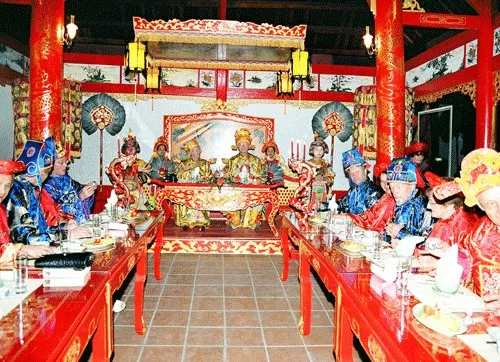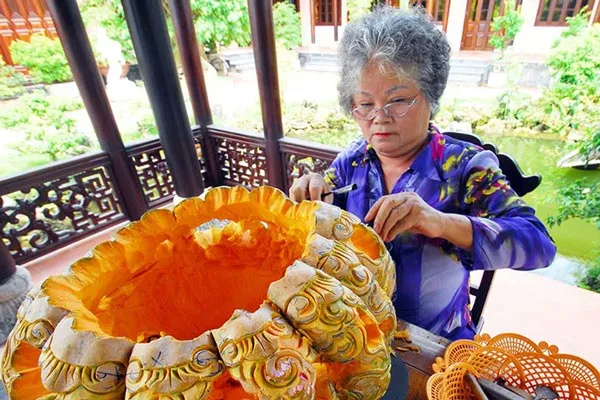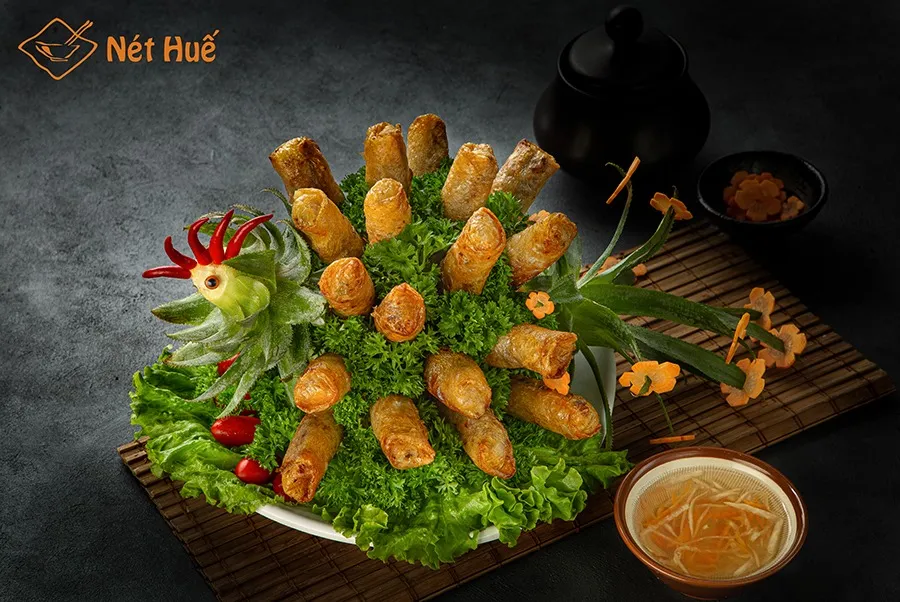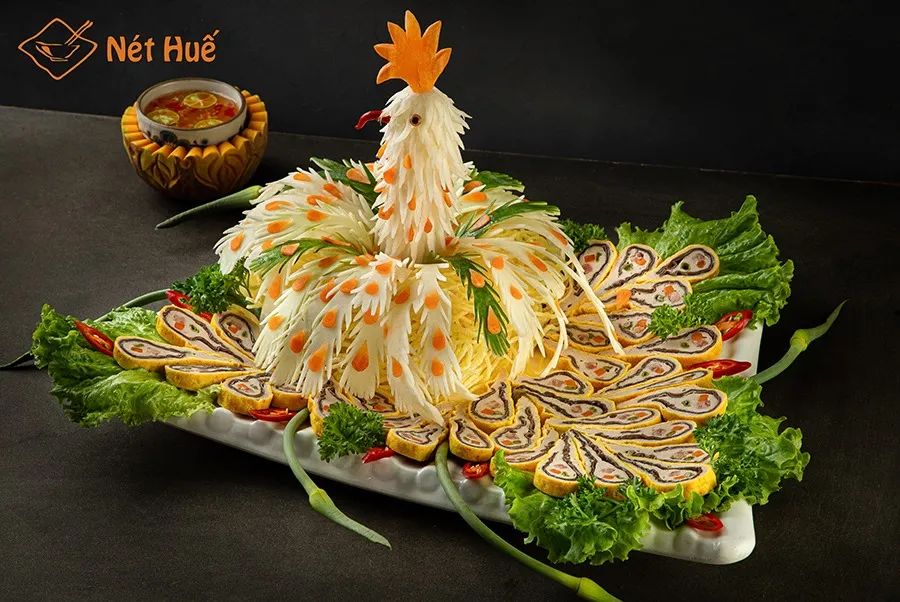Hue, the ancient and serene imperial city, is not only renowned for its majestic tombs and tranquil pagodas but also as a repository of unique royal culinary essence. Hue cuisine, especially its royal variant, has long been considered an integral part of the national cultural heritage, deeply reflecting the history, culture, and philosophy of Vietnamese people. Embarking on a culinary journey through Hue’s royal cuisine is not just about savoring delicious dishes but also experiencing a fascinating and memorable cultural and historical adventure.
Origins and History of Hue Royal Cuisine
Hue royal cuisine originated from the need to cater to the dining requirements of kings and the royal family of the Nguyen Dynasty, the last feudal dynasty of Vietnam, which established its capital in Hue from the early 19th to the mid-20th century. To meet the stringent demands of the aristocracy, the most talented chefs from all over the country were summoned to the capital, bringing with them the culinary quintessence of each region.
Using rare ingredients, meticulously selected from all parts of the country and even from abroad, royal chefs created dishes that were not only delicious but also visually appealing, imbued with cultural imprints and Eastern philosophy. Hue royal cuisine is not simply the art of cooking but also a harmonious combination of flavors, colors, presentation, and cultural and historical meanings hidden in each dish.
Over hundreds of years of history, despite numerous upheavals and changes, Hue royal cuisine has retained its core values, becoming a priceless culinary heritage of Vietnam. Today, although no longer existing in a court setting, the essence of Hue royal cuisine is still preserved and developed, serving tourists and culinary enthusiasts worldwide.
Exquisite Ingredients and Unique Preparation Methods
The uniqueness of Hue royal cuisine lies not only in its flavor but also in the incredibly meticulous and elaborate ingredients and preparation methods. Ingredients used in Hue royal cuisine must be rare and the freshest, carefully selected from all regions. From fresh seafood such as shrimp, fish, squid, abalone, and shark fin, to high-quality livestock and poultry, and specialty vegetables and fruits, all must meet the most stringent standards.

The preparation methods for Hue royal dishes are also extremely unique and refined. Dishes are often prepared using elaborate and meticulous methods, requiring the skill and experience of the chef. From marinating spices and preliminary processing of ingredients to cooking and presentation techniques, everything is done elaborately and exquisitely.
One of the important factors in preparing Hue royal cuisine is the balance of flavors and colors. Dishes are often harmoniously combined with sour, spicy, salty, sweet, bitter, and acrid tastes, creating a unique and unforgettable flavor. The color of the dish is also emphasized, often coordinated delicately and beautifully, stimulating the visual senses of the diner.
In addition, Hue royal cuisine also emphasizes nutritional and health factors. Dishes are often prepared to be both delicious and nutritious, good for health. The harmonious combination of ingredients, spices, and preparation methods not only creates delicious dishes but also provides high nutritional value.

Discovering “Bat Tran”: Eight Culinary Masterpieces
In Hue royal cuisine, “Bat Tran” is considered the pinnacle of culinary art, including eight of the rarest and most exquisite dishes, usually reserved for kings and major festivals. “Bat Tran” are not only delicious dishes but also symbols of wealth, power, and royal status. The eight dishes in “Bat Tran” may vary from time to time, but generally include the following:
- Nem Cong (Peacock Roll): A spring roll made from peacock meat, a rare bird with a particularly delicious flavor. Nem Cong is often elaborately and meticulously prepared, from selecting the meat, grinding, to rolling and frying it to a golden crisp.

- Cha Phuong (Phoenix Patties): Patties shaped like a phoenix, a symbol of nobility and power in Asian culture. Cha Phuong is not only delicious but also visually appealing, showing the talent and skill of the chef.

- Da Tay Nguu (Water Buffalo Skin): Water buffalo skin, elaborately prepared, soft, and richly flavored. Da Tay Nguu is usually stewed until tender, marinated with special spices, creating a unique and appealing dish.
- Ban Tay Gau (Bear Paw): A dish that is controversial in terms of animal conservation, but historically, bear paw was considered one of the rarest and most nutritious dishes, often used to nourish the health of kings.
- Gan Nai (Deer Tendon): Deer tendon, crunchy and chewy, is processed into many attractive dishes such as stewed deer tendon, stir-fried deer tendon, and deer tendon salad. Deer tendon is not only delicious but also has high nutritional value.
- Moi Duoi Uoi (Orangutan Lips): Similar to bear paw, orangutan lips are also a controversial dish in terms of conservation. However, in ancient Hue royal cuisine, orangutan lips were considered a rare dish with a special flavor.
- Thit Chan Voi (Elephant Foot Meat): Elephant foot meat, a special ingredient, is processed into many unique dishes, with a distinctive flavor. Elephant foot meat is usually stewed until tender, marinated with rich spices, creating a novel and attractive dish.
- Yen Sao (Bird’s Nest): Bird’s nest, a precious food, is considered “white gold” of cuisine. Bird’s nest has high nutritional value, often processed into bird’s nest soup, sweet bird’s nest soup, and steamed bird’s nest, with the effect of nourishing health and enhancing vitality.
Experiencing Hue Royal Cuisine Today
Today, although no longer existing in a court setting, experiencing Hue royal cuisine is still an indispensable part of a tourist’s journey to discover Hue culture. Many restaurants and hotels in Hue have been striving to recreate ancient royal dishes, offering diners the opportunity to enjoy the culinary quintessence of the royal family.
When experiencing Hue royal cuisine, visitors not only enjoy delicious dishes but also immerse themselves in a unique cultural and historical space. Many restaurants are designed in the ancient royal style, with ancient architecture and magnificent decorations, creating a luxurious and noble dining space.
In addition, some restaurants also organize traditional art performances such as Hue singing and Hue royal court music, helping visitors have more unique cultural experiences when enjoying cuisine.
To have the most authentic Hue royal cuisine experience, visitors can look for famous and reputable restaurants that are highly rated for food quality and service. Some restaurants even have chefs who are descendants of ancient royal chefs, or are well-trained in royal cuisine, ensuring that diners are served authentic royal dishes.
Cultural and Spiritual Values of Hue Royal Cuisine
Hue royal cuisine is not just delicious dishes but also an important part of Vietnam’s cultural and historical heritage. It reflects the sophistication, meticulousness, and elaborateness in the lifestyle of the ancient aristocracy, while also expressing the profound cultural and philosophical values of the nation.
Hue royal cuisine is a harmonious combination of material and spiritual culture. Each dish is not only a product of culinary art but also a work of art, containing cultural, historical, and spiritual values.
Experiencing Hue royal cuisine is not just about enjoying food but also exploring culture and history, learning about the good traditional values of the nation. It helps us better understand the past, cherish the current cultural values, and look to the future with cultural values being preserved and promoted.
Hue royal cuisine deserves to be a precious gem in the treasure of Vietnamese culinary culture, which needs to be cherished, preserved, and promoted, so that these unique culinary essences will last forever and continue to spread to international friends.